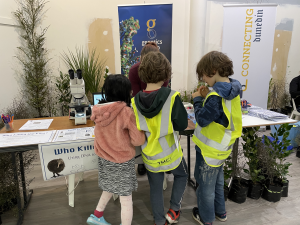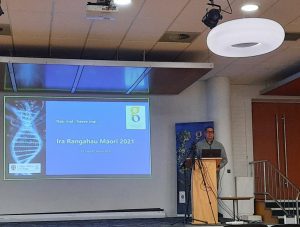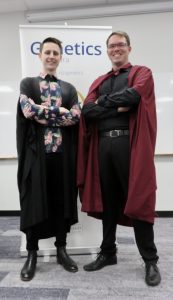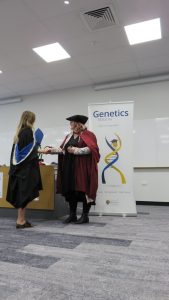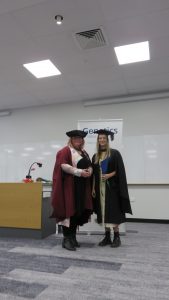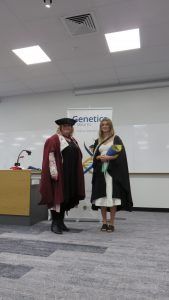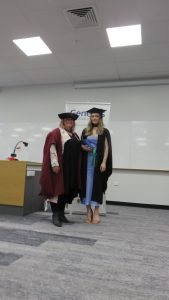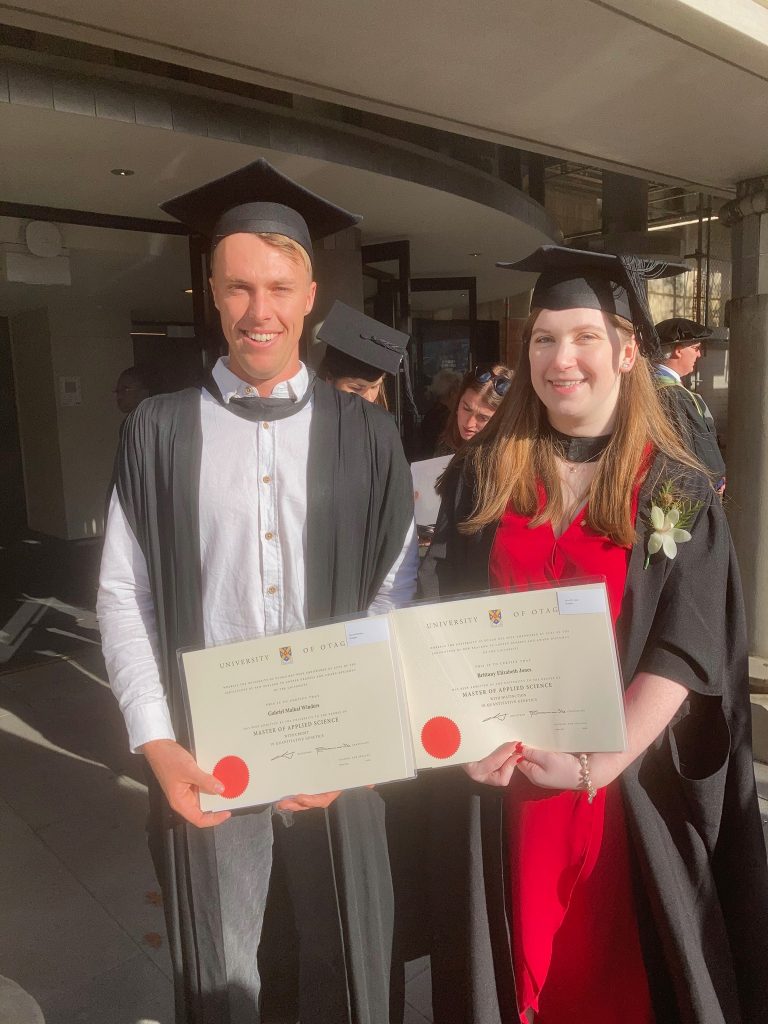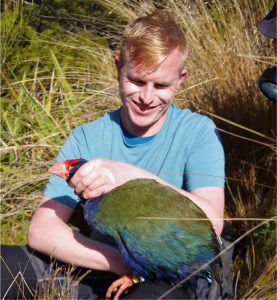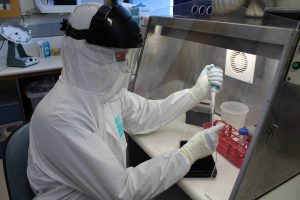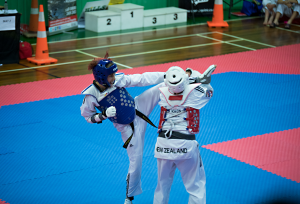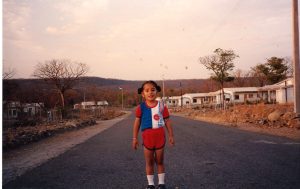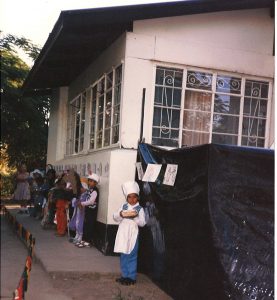On the GO 2021
 For those of you unable to attend our recent Symposium and who have not yet managed to get your hands on a physical copy of this years magazine, we have an electronic version you can view.
For those of you unable to attend our recent Symposium and who have not yet managed to get your hands on a physical copy of this years magazine, we have an electronic version you can view.
If you would like a physical copy, please get in touch and we will arrange a delivery to you.
A huge thank you to all who have contributed to this year’s magazine and to the events, research and activities that fill its pages!
NZ International Science Festival 2021
The 2021 NZ International Science Festival was both the biggest and most diverse festival yet, with a jam-packed programme that included over 100 events from 8th – 18th July. This biennial festival was enjoyed by the smallest budding scientists all the way through to those working in science but curious to find out more about other disciplines. Genetics Otago was lucky enough to be involved with two events over the 10 days.
 Together with the Department of Biochemistry and the Genetics Teaching Programme (Genetics Mātai Ira) we hosted a hands-on display at the University of Otago Science Expo on the 9th and 10th of July. This huge 2-day event, in the atrium of the Business school, included displays and activities from 23 University departments and research centres. Children and adults alike had a great time exploring our stations; trying their hand at pipetting and gel loading, observing and drawing fruitflies and lysozyme crystals with mini microscopes and, our tried and true favourite, extracting DNA from bananas (a staggering 200 DNA extractions were performed over the 2 day period!)
Together with the Department of Biochemistry and the Genetics Teaching Programme (Genetics Mātai Ira) we hosted a hands-on display at the University of Otago Science Expo on the 9th and 10th of July. This huge 2-day event, in the atrium of the Business school, included displays and activities from 23 University departments and research centres. Children and adults alike had a great time exploring our stations; trying their hand at pipetting and gel loading, observing and drawing fruitflies and lysozyme crystals with mini microscopes and, our tried and true favourite, extracting DNA from bananas (a staggering 200 DNA extractions were performed over the 2 day period!)
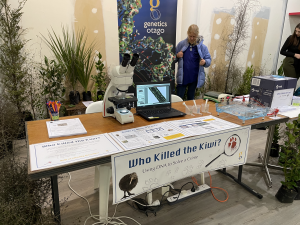 The 17th and 18th of July saw us ‘set up shop’ for the Outside Inside Forest in the Meridian Mall. The Forest had a wide variety of activities over the 10 days including land and sea conservation, climate science and animal education. Genetics Otago brought along a modified version of our ‘Who Killed the Kiwi?’ school resource for the first time, adding another successful community outreach resource to our belts. Young detectives helped to identify suspects using footprint analysis and hair samples, they then learnt about the power of DNA in determining the true culprit (the naughty dog!) using gel electrophoresis. The use of a microscope and loading of gels were both hits with children of all ages. The activity provided a great reminder of why it is so important to keep our dogs under control while out walking in the bush and on beaches (this activity could easily have been ‘Who Killed the Penguin?’).
The 17th and 18th of July saw us ‘set up shop’ for the Outside Inside Forest in the Meridian Mall. The Forest had a wide variety of activities over the 10 days including land and sea conservation, climate science and animal education. Genetics Otago brought along a modified version of our ‘Who Killed the Kiwi?’ school resource for the first time, adding another successful community outreach resource to our belts. Young detectives helped to identify suspects using footprint analysis and hair samples, they then learnt about the power of DNA in determining the true culprit (the naughty dog!) using gel electrophoresis. The use of a microscope and loading of gels were both hits with children of all ages. The activity provided a great reminder of why it is so important to keep our dogs under control while out walking in the bush and on beaches (this activity could easily have been ‘Who Killed the Penguin?’).
With almost 100 entries to our detective prize draw by the end of the weekend, we drew two lucky winners to take home a prize pack of Genetics merchandise. Congratulations to Quinn (5) from Invercargill and Siraj (6) from Mosgiel and thank you to all the young (and not so young) detectives who helped us solve the mystery.
Events like this are not possible without the support of volunteers to run the activities and answer the many questions from the public, so a huge thank you to the members of our Outreach hub who helped out over the two weekends, we hope you enjoyed the experience!
Ira Rangahau Māori 2021
Genetics Otago and Allan Wilson at Otago (University of Otago Research Theme) supported the second Ira Rangahau symposium, held on the 3rd and 4th of June 2021. This event was planned following the initiative of Phil Wilcox (Department of Maths and Statistics), who organised the inaugural Ira Rangahau in 2018. With Phil’s guidance, Alana Alexander and Catherine Collins (both Department of Anatomy) planned the format of Ira Rangahau 2021, with assistance from Rebecca Oliver (Genetics Otago) and Jane Reynolds (Division of External Engagement). The event was a great success, with 30 people, including Māori undergraduate students, staff and other interested colleagues at the University of Otago, registering to attend across the two days in addition to 23 colleagues and whānau listening via zoom.
‘…thank you to you all for organising everything and for inviting me along to share my mahi. I had an amazing time and got to talk to some truly inspirational people. I felt very privileged to be a part of it all!’ – Blaise Forrester-Gauntlett (invited speaker).
Participants were welcomed by Ben Te Aika (Ngati Mutunga, Te Ati Awa, Kati Wairaki, Kati Mamoe, Waitaha) with a mihi whakatau on the morning of the 3rd. We were then fortunate enough to hear from nine Māori kaikōrero (speakers) from across Aotearoa, and from a variety of host institutions (universities, CRIs and a DHB) about their research applying genetics. Many of the speakers were early career researchers and in addition to sharing their science, speakers spoke often of their experiences and journeys as Māori scientists. Over kai and inu during the breaks, participants networked and engaged in whakawhanaungatanga, strengthening relationships between genetic scientists at the University of Otago and elsewhere.
We then heard from Mere Roberts (Ngāti Apakura, Ngāti Hikariro, Pākehā), as our keynote speaker, on the morning of the 4th. Mere delivered a fantastic keynote, sharing her experiences straddling genetics and Te Ao Māori over the course of her career. Following a final break for kai and the chance to chat to one another, those who were interested visited Stephen Robertson’s lab in the Department of Women’s and Children’s Health, to hear about his research and experiences working with whānau who gift tākoha to study rare genetic diseases. Rebecca Oliver then led a small group through a hands-on workshop, in the Genetics undergraduate teaching lab.
‘Thoroughly enjoyed the conference… because the speakers were excellent, I was able to follow and learn’ – Mere Roberts (keynote speaker).
Overall, Ira Rangahau provided the opportunity for us to demonstrate Otago’s commitment to supporting Māori kaiputaiao. Many of the speakers were early career researchers from Otago, showcasing the talent in Māori researchers and the potential for these scientists to become leaders in their field, while working with Māori communities, here at Otago.
Written by Catherine Collins and Alana Alexander
90-second Science Film Comp: Gavin Bishop – eDNA for marine monitoring and population genetics
University of Otago researchers, many of whom are Genetics Otago members, are pioneering the use of eDNA in New Zealand to study a number of avenues from native species, to COVID-19 and (as you may have heard previously) in a search for the Loch Ness Monster. The basis of eDNA (environmental DNA) research is that living things are constantly shedding DNA into their environment (soil, water etc). This DNA that is left behind can help scientists gain a snapshot of what and who has been in a particular location, from large vertebrates all the way down to microbes. eDNA provides a great means to quickly capture a lot of information about an environment in a non-destructive manner and although the technique does have its limitations, it is a great starting point in many conservation and environmental studies.
Third-year Medical School student Gavin Bishop has created a short film “eDNA for marine monitoring and population genetics” featuring Genetics Otago member and PhD student Clare Adams (Department of Anatomy). His film has been selected as one of five finalists in the University of Otago Student 90–second Science Film Competition and he is hoping to win the People’s Choice award for his work.
“I am absolutely fascinated by the creativity of scientists”
– Gavin Bishop, 3rd-year Medical Student.
You can help Gavin out by heading over to YouTube and watching, sharing and commenting on his film. So during your next coffee break take a couple of minutes to watch this great short film and share it with your colleagues and friends – let’s get this snapshot of Genetics out into the community!
ECAG Election for GO Member
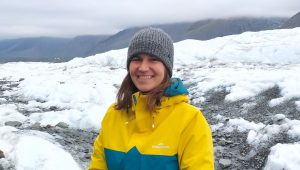 Genetics Otago member, Dr Lara Urban has recently been appointed to the eLife Early-Career Advisory Group (ECAG). eLife is a not for profit organisation that works across publishing, technology and research culture to encourage communication and responsible behaviour amongst researchers.
Genetics Otago member, Dr Lara Urban has recently been appointed to the eLife Early-Career Advisory Group (ECAG). eLife is a not for profit organisation that works across publishing, technology and research culture to encourage communication and responsible behaviour amongst researchers.
Appointments were made following a global call for applications and Lara, alongside four others from Kenya, Argentina, Japan and India, was selected from 366 applications. She is the only one of the 16 members of the ECAG based in Oceania.
“Lara Urban: Research Fellow at University of Otago, New Zealand
Lara sees supporting junior researchers as an essential part of her scientific career, whether as a student representative at multiple institutes, as a mentor, or as a leader of scientific organisations and societies. She hopes to see major change in research culture, ranging from greater inclusiveness and openness in the scientific community, to a fair and transparent peer-review system. Lara studies how statistical genomics can benefit nature conservation and be incorporated into the management of critically endangered species.” – Early-Career Advisory Group: Election results 2021
If you are interested in finding out more about opportunities, events and issues sign up to the eLife Early-Career Community newsletter, follow @eLifeCommunity on Twitter or contact Lara via email.
To learn more about Lara’s research check out our previous blog post by Mick Whittle.
Congratulations to our Recent Graduates!
Genetics Otago would like to congratulate all of the Genetics students who graduated last weekend. The students and their families were invited to a celebration, prior to the ceremony, hosted by the Genetics Teaching Programme and Department of Biochemistry.

In particular, we would like to Congratulate Brittany Jones and Gabriel Winders who are the first-ever graduates of the Master of Applied Science in Quantitative Genetics a programme convened by GO member Dr Phil Wilcox. You can read more about Brittany and why she chose a MAppSc in Quantitative Genetics here.
Avian Ancient DNA with Alex Verry
Alex Verry’s PhD research field has just broken the one-million-year barrier. Having said that, though, it’s also an area that’s so young that Alex himself wasn’t aware of it before starting at university.
We’re talking ancient DNA here, and the hot-off-the-press news of the oldest aDNA yet to be sequenced – that from million-year-old mammoth teeth preserved in the Siberian permafrost. And while the study of ancient genes traces back to the work of renowned Kiwi scientist (and Otago alumni) Allan Wilson in the 1980s, the subject itself has really taken off in the past few years. It’s only within the last decade or so that researchers have been able to extract aDNA from extinct species ranging from mammoths to cave bears to our own near-relatives, the Neanderthals.
Tragically, it’s also only decades since one species at the heart of Alex’s doctoral study – the New Zealand bush wren – itself disappeared, with the last recorded sighting of this tiny native bird on Kaimohu Island, off Stewart Island, in 1972. Like so many of our treasured endemic species, this endearing creature fell prey to introduced predators like rats and stoats.
Alex’s work, however, allows him to travel back to the time when these wrens were found throughout New Zealand. Indeed, his aDNA detective work allows him to look through the last 20,000 years or so, and especially at the effects of past climate change on populations of New Zealand’s endemic wildlife.
“There’s a strong signal of population structure caused by glaciation,” Alex says. In fact, the genetic evidence suggests the little wren’s evolution was similar to that of our national emblem, the kiwi, with populations contracting and diversifying due to fluctuations in climatic conditions.
And it’s the chance to make an important original contribution to our understanding of New Zealand’s past that has provided excitement, motivation and personal satisfaction.
“No-one had looked at bush wrens before at such a fine scale,” Alex says.
Yet he’s far from a ‘one species researcher, having also worked on other native birds, such as the iconic moa – including taking part in archaeological digs. His willingness to “get involved in things” has seen him out in the field with living taonga, such as takahē, as well as with the preserved remains of their long-departed relatives. For instance, some of his ancient DNA work has resolved a long-standing puzzle on the origins of North Island and South Island varieties of takahē.
“Don’t be afraid to ask – and volunteer” is Alex’s straightforward advice for budding geneticists.
As for his own journey to the soon-to-be-completed PhD, it’ll come as no surprise to learn Alex originally wanted to be a palaeontologist (well, at least when he was a dinosaur-fixated 5-year-old). But his enduring “interest in the natural world” led him to take biology at university, where he stumbled across ancient DNA for the first time.
“What really drew me was listening to a lecturer describing [DNA in] ancient penguin bones,” he recalls. “I thought, ‘This is crazy – can you really do that?’”
As for the future, he’s ready to spread his wings (well, as a bird specialist, why not?!) – possibly with post-doctoral aDNA research in Europe.
Eventually, though, he’d like to end up back home in New Zealand, working in museums or in conservation.
“Or even running my own laboratory.”
Written by Mick Whittle
Images supplied by Alex Verry
Bacterial Biomes, Colorectal Cancer and Different Diets – Rachel Purcell
“I think you would be hard-pressed to find any disease that microbiome is not linked to at the moment.” Rachel Purcell commented when I joined her for a discussion about her research. Our microbiome is the genetic material from all the microbes that live in the human body, including bacteria, fungi, protozoa and fungi. The gut microbiome focuses on just those organisms found in the gastrointestinal tract. This is where Rachel’s research sits. She is interested in how the microbiome affects various disorders. This is mainly colorectal cancer, but also includes diseases such as diverticulitis, appendicitis, and IBD. Her specific area of interest at the moment is how the tumour microbiome, or the gut microbiome, influence the bodies responses. The microbiome may have an effect on the progression of the disease, or influence treatment methods.
Rachel explained that the gut microbiome is well characterised, and we have a good idea of what microbes are present. Rachel uses a technique called RNA-Seq, which allows her team to catalogue what is present, with the added benefit of providing information about the functions that microbes might perform. Rachel explained “microbiomes are very unique, and simply counting what is there is not giving us a good idea of what they are doing. Our approach is to look for functional links and then form our computational data, then we can pull things out, and then design experiments that we can carry out in the lab to see whether any of those actually reflect what we see in the sequencing data.” Rachel also explained “there is quite a lot of redundancy of function. Two people can have completely different microbiomes, but they can both function the same. We are trying to not just look at the ‘bugs’ but look at the function. We do try to resolve it down to the species level sometimes because you need to do that for lab work, but there is such a crossover.”
Characterising different microbiomes in all types of patients and getting an idea of what functions they might perform, is paving the way to understanding how our gut microbiome might affect our susceptibility to disease, and possibly treatment. Rachel explained that although this research is in its infancy, there are certainly possible treatments that can arise from the research. “With microbiome, there is always the possibility of manipulating it, which is a lot easier than trying to change our host genomes or our host responses. Even looking at what has been done so far, there is definitely a lot of potential for the therapies, I think.”
Background
Rachel grew up in Ireland and has done her fair share of globe-trotting. Her travels have left her fluent in English and French, she also speaks a little Italian and Spanish, and a little Te Reo. Growing up in Ireland, Rachel reflected on her education in convent schools “studying science in a school where a lot of the text was redacted, definitely piqued my interest. I had a nun teaching me science and it was the strangest experience. A lot of things we glossed over, I thought ‘l want to know what this is about’. For a long time, I wanted to be a scientist, from a very early age.” In line with this plan, Rachel completed a Medical Laboratory Science and then a Biomed honours degree from University College Cork.
An opportunity presented itself for Rachel to attend the Pasteur Institution, an internationally renowned biomedical research institution in France. She completed her masters in bacterial genomics here, joking about the time “way back when it took two years to sequence the bacterial genome.” This research is where Rachels interest in bacterial genomics began. Following her master, however, she followed her interest in cancer research and went on to work in diagnostic cancer labs. “But I was always keeping an eye on what was going on in the bacterial genomics field and it was cool to be able to put the two things together—micro and cancer genomics. I guess I have a background in both because when I went back to work in diagnostics it was always in histopathology, and always looking at cancers.”
Seeking a change of location, and wanting to emigrate somewhere that spoke English, Rachel and her husband opted for New Zealand over Canada. She has been here for over sixteen years and raised her children here. She now resides in Arthur’s pass, enjoying the scenery and the calls of Kiwi in the night.
Colorectal Cancer
When I quizzed Rachel on which burning question she would most like answered, she responded “It would have to be about cancer prevention. Can we actually prevent a lot of the cancers that we are seeing? Here and everywhere, I do not think we are putting enough effort and research into prevention. We are targeting the wrong end of cancer, trying to treat people and come up with different solutions. If I could do anything, it would be in the preventative space. For example, trying to predict who is going to get these cancers, particularly sporadic cancers, and some way that we can prevent them. Whether it is by targeting the microbiome with faecal microbiome transplants, or even food interventions. I would love to think that that was going to be the way of the future.”
Rachel suggested that screening from a young age would be a beneficial step. “Because we are seeing quite an increase, particularly in colorectal cancers, in younger people now, under the age of 40-50, which we did not see many of before—it used to be a disease of old people. I mean, it has got to be something lifestyle-related. It is not going to be hereditary with the way things are changing so quickly, and I think the most obvious thing is what we are taking into our bodies, our food, and our diet, in general, has changed so much over the last 30-40 years.
Rachel also explained that simply screening people and informing them of a cancer risk would be inadequate, particularly if diet changes are a part of treatment.” When it comes to diet, a lot of it is social as well, and down to education. It is not just about trying to put interventions in place, it is a whole package.”
Education
Education was a theme that came up in my discussion with Rachel. Although her research does not involve genetic engineering, many people associate genetics research with genetic modification. I asked Rachel how well educated the public is on these matters. “In New Zealand, we are lagging behind, and there is a hangover of fear about genetic engineering…I think some of it is probably political. People do not understand that much of what we eat, use, and grow is genetically engineered. The idea that it is three-headed fish and stuff, it is an issue around education for sure. We are not doing that very well… we are very far behind.”
In regard to how we might go about instilling confidence in genetics research in the public, Rachel suggested “we need more education, right from kids in school, about how to assess where they are getting their information from. With the internet, you type something in and take the first hit. You do not know how to tell if your information is correct, or whether it is an imbalanced source, that is such an issue these days. Many people get their information from social media, which is scary. As scientists, we used to have public trust, and we were the voice of reason and truth, but that is all changed with social media platforms. Scientists are not present enough in that space, fighting the mystery. Part of our job now is to fill the void, because if we do not fill the void, it is filled with rubbish. A lot of us probably thought, in a sense, we were above that. We actually have to get down and dirty with the public. We have got to start from a young age. Kids need to learn how to actually evaluate the information that is out there, and I do not think that is happening.”
With the possible implications of her research, and the possibility of preventing cancer, it is understandably frustrating that the public is still lagging behind in their understandings of what genetics research is, how it works, and the benefits it could provide. In Rachel’s words, “I think it is time for change.”
Written by Don Sinclair
Images Supplied by Rachel Purcell
Vanessa Lattimore—Unwinding the Genetics of Breast Cancer
Vanessa’s Work
BRCA-1 and BRCA-2 are the names given to two genes, which everybody contains a copy of in their DNA. Some individuals contain an epigenetic variant (a mutation) in these genes, which we know is associated with an increased risk of breast cancer. Interestingly though, two individuals may have an identical genetic mutation, and display breast cancer in different ways, at different stages of life, and one may never develop cancer at all. Vanessa Lattimore is investigating why.
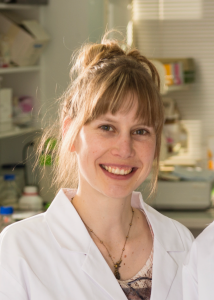 Vanessa manages the familial breast cancer study in New Zealand. In her own words, “essentially we are trying to enrol families who carry high-risk variants of BRCA-1 and BRCA-2. The reason for this is that we want to understand why individuals with the same genetic change (that increases the risk of breast cancer), display breast cancer in different ways.” The genomes of those that carry variants in the BRCA-1 and BRCA-2 genes can be studied for various factors, such as whether there are additional genetic changes present, that could be responsible for how breast cancer presents differently in different patients. Part of this study involved comparing the genes of 300,000 individuals with the breast cancer variant genes and comparing them to approximately 150,000 people in a control group who have no breast cancer variant genes. This work has, unfortunately, been postponed due to COVID-19 but is well underway.
Vanessa manages the familial breast cancer study in New Zealand. In her own words, “essentially we are trying to enrol families who carry high-risk variants of BRCA-1 and BRCA-2. The reason for this is that we want to understand why individuals with the same genetic change (that increases the risk of breast cancer), display breast cancer in different ways.” The genomes of those that carry variants in the BRCA-1 and BRCA-2 genes can be studied for various factors, such as whether there are additional genetic changes present, that could be responsible for how breast cancer presents differently in different patients. Part of this study involved comparing the genes of 300,000 individuals with the breast cancer variant genes and comparing them to approximately 150,000 people in a control group who have no breast cancer variant genes. This work has, unfortunately, been postponed due to COVID-19 but is well underway.
Another project of Vanessa’s involved collecting tissue samples of 367 women with breast cancer. These women donated tissue to the Christchurch tissue bank, which Vanessa’s team could use to extract DNA from, and test whether any of the women carried high-risk gene variants. Vanessa explained “we found that 13 women (of 367) carried high-risk breast cancer genetic variants. Of those 13, around half were not referred for genetic screening. This is really important as, if you know you carry a high-risk variant, you can manage the risk. For example, you can get a mastectomy, or you can have extra surveillance to detect the disease earlier if it does develop, which is a good option because if you get it early, you get better outcomes. But these women were not being referred for various reasons, because they did not fit within the current guidelines for referral. This adds evidence towards a screening of all breast cancer patients, which will allow everyone [carrying a high-risk variant] to be identified, and then they get an opportunity to manage their risk accordingly. It is really important not only for those individuals but also for their family members. Being a genetic disease, many of their family members will carry the same variants, and many of those will not have developed the disease yet. If they know that they are high risk as well, they can potentially prevent themselves from developing it.” This work is part of a recently published study.
Vanessa is now working on a project using oligonucleotides (short DNA or RNA molecules) to target BRCA-1 and BRCA-2 in certain regions. The goal is to repair the gene in men and women who carry the high-risk variant, in order to lower their risk of getting breast cancer. Vanessa explains the possible implications of this “if you have got a high-risk variant, then the biggest thing that you can do to lower your risk is a double mastectomy. That is hugely invasive and has side effects. However, if we are able to, for example, give someone an injection that lowers their risk as much, then that would be a lot better.” Oligonucleotide research, and its applications, is still in its’ infancy and Vanessa’s research is in its early stages.
To be clear, this process is not a form of genetic engineering and does not involve the manipulation of genes themselves. When our DNA is required to create a protein, a copy of the relevant gene is made, containing only the relevant information for forming that specific protein. This copy is called RNA. The process of copying the gene contained within the DNA, to form the RNA copy, is known as splicing.
As I mentioned earlier, everyone contains a copy of the BRCA-1 and BRCA-2 genes in their DNA. Those that contain epigenetic variants (mutations) in their genes are not able to produce functional proteins from their BRCA-1 and BRCA-2 genes, because the mutation causes the splicing step to be cut short. The idea is to use oligonucleotides to ‘fix’ the splicing step in people carrying genetic variants, with the hope that the RNA copy of the gene becomes functional and can go on to produce a fully functional protein.
Breast Cancer in Aotearoa
Vanessa explained the approximate frequency of variants in the BRCA-1 and BRCA-2 genes. “One in nine women will get breast cancer at some stage in their lifetime, and of those, I think around 3- 5%, sometimes up to 10% depending on the study you look at, will carry a high-risk variant. The majority of people do not have the genetic variant, but there are still a significant number that do. In the general population, men have one in 1000 chance of developing breast cancer. It changes for men, to about one and 100 if they have the variant, whereas in women it can increase up to roughly 70%. Men still have a much lower risk, even if they have the variant, but it is still much higher than what they had otherwise. But they also have less breast tissue, which is probably a big factor behind it.”
I asked Vanessa how we might go about implementing the findings of her research into clinical practice in New Zealand. The issue that is often raised when proposing a genetic screen of a population for a specific genetic mutation, is that other mutations can be found, where we do not know what they mean or what their associated risks are. These are called incidental findings, and if every unknown incidental finding that was discovered was referred to the public health system for treatment, the public health system could not cope. The way around this is to offer a genetic screen but to look specifically at the BRCA-1 and BRCA-2 genes, as we know that there are actionable outcomes if a mutation is discovered. Vanessa explained “I think it would be hugely beneficial to offer everyone the opportunity to have a genetic screening that looks at specific genes (in some cases specific changes in certain genes), which if present, you can actually do something about, or at least have that awareness going forward. Even having awareness is great because, for instance with BRCA-1 and BRCA-2, we would know every family that carries it, and they will all have the opportunity manage that risk, and that will lower the incidence of breast cancer. This will save lives. I know that. That would be great.”
The Road to GO
Vanessa grew up on a farm near Methven, well accustomed to the outdoors. Vanessa has some great stories from the farm. One time while out roughing, she and her sister came across a set of antlers stuck to a water trough. When they got closer, it turned out to be a live wild stag! Another endearing story was raising a baby Thar, called Forest. “Honestly, Thar are incredible. If you think lambs can run around all day, Thar are insane. We used to run around yelling “Run, Forest, run!” and he would chase after us. One day he was walking along the second-floor veranda, less than a week old, and he trotted off the edge. My sister said, “oh my god!” But looked over, and he kept walking, like it was nothing! Honestly Thar are incredible.”
Vanessa is also well adept in martial arts and has competed internationally. “I started Taekwondo when I was eleven, but actually quit three months after and started karate, which I have been doing for about 21 years. I went to worlds last year, and I went overseas and did a few tournaments before COVID. It was good timing. After that, I did not have anything to aim for, and I started from scratch. Now I am a white belt in karate.”
Not knowing what she wanted to do after high school, Vanessa attended university for the sake of doing something. She explained “I did a Bachelor of Science in Conservation and Ecology because I love animals and I decided I wanted to work in a zoo. I figured if animals are going to be stuck in a zoo, they should have a good life. I was going to ‘save the animals’. But I worked out pretty soon that you could not actually get a zookeeper qualification at university, you had to do a specific course in Auckland.” She then went on to do honours, sequencing the genome of the spider species Dolomedes aquaticus. She then took some time off to work and explained “it was during that one and a half years I had off, working over that time, I realised that genetics was a career you could have because I did not realise that before that point. I also learned that I really enjoyed research and decided that I wanted to do research and a PhD. I decided to start looking at options. My two choices were either going to be the genetics of something to do with farming to improve farming in some way. Or human health, because I wanted it to be relevant and make a difference in the world. I developed the project that I came up with, with Logan [Walker], genetics of breast cancer splicing. Which is exactly what I am doing still. It fit me perfectly. I started that, and have been here ever since, it has been eight years now. I love it.”
Oligonucleotides
I asked Vanessa what question relating to her research she would most like answered, in her own words, “it would probably be something to do with… whether there is a genetic target that we could go after that would help us to stop breast cancer occurring, or cancer in general. Something to stop cancer from happening. Prevention is better than cure. If we can prevent breast cancer, then that would be ideal.” Vanessa used an example of similar research for spinal muscular atrophy, to explain how this method could work. The SMA-1 gene is responsible for producing a protein that goes on to develop muscle tissue. Those containing a mutation in the SMA-1 gene, cannot produce the protein, and end up having muscle degeneration. This occurs from childhood, and usually, those with spinal muscular atrophy will never be able to walk. However, we also have another copy of the gene, called SMA-2, which Is identical to SMA-1, apart from four single nucleotides (of approximately 500,000 base pairs) different. Researchers have used oligonucleotides to attempt to alter the splicing of SMA-2, such that it produces a functional protein, identical to the type SMA-1 should produce. Vanessa explained “that way the whole gene is made into a protein and produces functional protein. And these children walk. It is incredible. It is actually incredible.”
Vanessa then explained that some animals like elephants and blue whales, have multiple copies of the BRCA-1 and BRCA-2 genes in their DNA, and are not prone to breast cancer. The effect of this is that even if the original copies of the BRCA genes develop a mutation, they can still produce functional protein from the copies of the genes. This is a naturally occurring example of the process described above involving the SMA genes. These animals naturally have redundant copies of genes built into their DNA. For cases where we have similar, but not identical copies of a gene, like SMA-1 and SMA-2, there is the potential to use oligonucleotides to intervene, and create a functional copy of the non-functional gene.
Christchurch Tissue bank
Vanessa praised the Christchurch Tissue bank and it’s overseer, Helen Morrin, for being an absolutely invaluable resource for her research. “Trying to collect samples as they come in takes a while. For the study involving 367 women, samples were collected by the tissue bank between 2013 and 2017. I was able to access and get given them all on a day. I do not have to wait that four-year period to collect the samples. The amount of work that would go into collecting those samples over that time is a lot. It is a great thing; the tissue bank is absolutely invaluable…Depending on what tissue they are getting, they may get tumours and they will break them up into little pieces that they can divvy out. Thus, they can be used for multiple projects. For my project, I was looking at germline rather than somatic changes, I was not interested in the tumour, but the blood. They had four blood spots about [this big]. I was able to get up to six, three-millimetre punches from one of those blood spots to get DNA from it. They have still got plenty left for other projects in the future, or if we need to go back and get more. It is a really good resource. because it not only saves researchers a lot of time, it can also be used for multiple projects, with the same amount of effort to collect it.”
Vanessa has a deep-rooted passion for her research that shines through in her explanations. She has a clear vision of where her research might lead while being entirely open to her findings and results. Her research could have far-reaching results and in my opinion, is likely to become a routine part of our healthcare system. Vanessa’s interests extend far beyond the laboratory of course, and she has retained a love for farming and farm life and continues to excel in martial arts. I asked Vanessa what she would most like to be remembered for, to which she responded “I would like to make a positive impact in some way. Exactly what for would either be in my research or saving the planet. Or at least helping raise awareness of the situation, and making positive changes to correcting it in some way.”
Written by Don Sinclair
Images Supplied by Vanessa Lattimore
Genes, Medication and Mental Health Frustrations—With Simran Maggo
Pharmacogenetics
We are all aware that our genetics play a part in our likelihood of contracting certain diseases. The combination of genes we inherit from our parents determines what diseases we are susceptible to. Are you aware that our genetics also determine our reactions to drug treatments as well? This fascinating field of medicine is called pharmacogenetics, and it looks at how our genes affect our responses to medication and the associated side-effects of medication.
Research Fellow Dr Simran Magoo has been interested in pharmacogenetics for the last 10-15 years and has a strong interest in drug-induced adverse drug reactions. Simran explained, “I just find drugs interesting—How you could take a medication, and how I could take the same medication, and even if the dose was tailored towards our respective body weights, you could have a side effect, and I could not.” Simran’s current research is focused specifically on mental health medications and the reasons why there is such variability in which medications have efficacy for each individual. Simran explained, “a lot of people are prescribed antidepressants…and a lot of people report, either that it does not work for them, or that they get some horrible side effects.” In this case, usually the best (and only) option for the patient is to try successive prescription medications until they settle on one with some efficacy for their condition, and minimal side effects. The issue with this is that the process of changing medications can often compound mental health conditions. There is a drug called Venlafaxine for example, (an SSNRI used to treat depression among other things), which has great efficacy for some, but not for others. For those that report low efficacy, the withdrawal process involved in coming off the medication can be traumatic, making it difficult to stop and move onto the next medication, and thus make recovery a lot more difficult for the patient.
Simran explained how his research is attempting to improve on this process. “We have been looking at recruiting people (who take prescription medications for mental health conditions) into our various studies and seeing: is a person’s genetic makeup associated with specific side effects they get, or, associated with whether the antidepressants work or not?”
Simran noted that while medication is a great option for those suffering from mental health conditions, it should not necessarily be the first option. Simran explained “I think antidepressants should probably not be your first line of thought. I think there are various other therapies, cognitive therapy, or group therapy, or just talking to someone. It may sound bizarre coming from someone who has studied pharmacology, and usually, would probably be pro-drugs. But I think for mental health, drugs help. They definitely help, but I think they should probably be one of the last resorts.”
Journey to Genetics
Simran has traversed a fascinating path to conducting his research with Genetics Otago. Simran was born in India and moved to Africa with his family at about six months old. His father, a mechanical engineer, was an expatriate in Zimbabwe. Simran and his family spent seven years in Zimbabwe, before moving on to Botswana. As a result, Simran speaks Hindi and Punjabi, and some Setswana, the language of Botswana. Recalling much more of his time in Botswana than Zimbabwe, this is where Simran completed the majority of his schooling and remembers it as a great place to grow up, but commented it would be very hard to compare to New Zealand. During this time, Southern Africa was a great place to be as the economy was thriving, and as his father was an overseas employee, they enjoyed some perks such as entrance to the best schools. Although he commented that after attending an international school for two years, he “actually did not like it much,” explaining “I preferred the local public schools. I suppose I found the international schools pretty snooty, and full of rich kids. Our family, we are not super rich, and I suppose I just did not fit in. I just found going to regular school was more my kind of thing.”
Recalling one experience with a particular teacher that stuck with him, Simran says “I suppose back in those days there used to be a bit of segregation or racism, so to speak. This may sound really wrong, but it actually happened. They put all the white kids in one class and put all the non-white kids in another one. I was obviously put in the other one. But the teacher said to me “look, you may see a big difference between that class and our class,” but I think she said something about God’s brain, like “your brain is no different than theirs. Do not let that get you down. What they are going to learn, is exactly what you are going to learn, so there is going to be no difference.” So yeah, I suppose that was an interesting time.”
As Simran approached high school graduation, his family was looking at possible countries to migrate to next and had applied for residency in a few countries, including Australia and New Zealand. He recalls the New Zealand residency came through and his dad one day asking “Simran, do you want to go to New Zealand? Because we have applied for residency and it just came through, and you have almost finished year 12.” Simran explained “And that is basically how I ended up in New Zealand. He gave me my passport, gave me a bit of money and he was like, “go check it out!”” After being accepted into Auckland University, Simran visited Dunedin and decided the small city was much more his kind of pace, and subsequently began studying health sciences there. Simran joked “I think, not everyone, but most people want to be a doctor at some point in their life. I think I wanted to, or maybe my parents wanted me to, but I was not sure. But, I did not get into medicine. However, I came across the Department of Pharmacology, which seemed really interesting.” He went on to complete a bachelor’s degree in pharmacology, followed by a postgraduate diploma, masters and PhD. Simran’s family soon joined him in Dunedin. He explained “Basically, Dad said, ‘this is the day that we are going to pack up, and we are also going to come,’ he said, ‘Just look at a few houses.’ I had a few houses picked out, and when they came, we decided on one. We have been living in that house since then.”
Simran recounted an amusing story from his first job in New Zealand, working as a computer software salesperson. When he applied for the job, he had thought it would be in a computer store, but it was a door-to-door salesman role. This was in the early 2000s when not many people had computers in their homes. His work had travelled to Gisborne to do selling there, and Simran was relatively new to New Zealand. He inadvertently got invited into a Mongrel Mob house (joking that he was lucky to be wearing red that day). The place was messy and cluttered, but they were interested in purchasing a computer setup. He ended up getting the sale and a decent commission, and only later did he come to realise what the mongrel mob was!
Routine Genetic Cancer Screening in New Zealand?
In discussing his research in more detail, Simran explained that pharmacogenomics or genetics should ideally be a crucial part of the New Zealand healthcare system. This would mean that prior to the prescription of any medication, a patient should have a basic pharmacogenetic screen. This could provide basic predictions such as whether the patient is likely to have an adverse reaction to the drug, and whether the drug will have any efficacy at all. The benefits of this could be huge, we would have significantly less wasted medication, faster recovery times, and less adverse drug reactions. Simran explained his frustrations that this concept has not been taken seriously, asking “why is it that a very basic test like this is being held back?”, or “what do I need to do to actually convince people that this should be in routine every day clinical care?”
There is very good research for certain drugs that says, “if you have these specific genetic variations, you are likely to get these adverse drug reactions”. There are some very clear-cut examples where, if you have a specific variation, you are almost 90% likely to have a physical reaction. There is currently one medication in New Zealand that, prior to prescribing it, doctors have to do a genetic screen in their patient. However, this drug is used in antiretroviral therapy in the treatment of HIV, and thus is not commonly prescribed in New Zealand. Coming back to prescription antidepressants, Simran feels that “if you were to test for variation in the genes prior to prescription, you could most likely prevent people experiencing side effects. I would say there is enough evidence out there in the literature, as well as in some of the studies we have done, to show that if you have certain genetic variations, you actually have a higher risk of getting side effects.”
Simran gave another interesting example that nicely demonstrates the importance of pharmacogenetics. A proportion of the population contains a mutation in their CYP2D6 gene. This gene is responsible for producing the Cytochrome 2D6 enzyme, therefore those that have a mutation in the gene cannot produce the enzyme. The enzyme is used in the process of breaking codeine down into morphine, a vital step for the codeine to provide effective pain relief. As the enzyme that facilitates this process is not produced in certain people, any codeine they take will never be converted to morphine. You can be prescribed as much codeine as you want, it will not work for you. To put it bluntly, Simran explained “there are millions of doses of codeine that probably get dished out in New Zealand every year, and it is basically the same as just throwing them down the toilet because they are not doing anything for the patient!” Simran then explained “I am one of those people. I have no 2D6 enzyme activity. So, when I had knee surgery, I told the doctor, look, please do not give me codeine or Tramadol or anything like that because it is not going to work for me.” His doctor thankfully understood and accepted this and prescribed alternate pain relief options. Some doctors though are not even aware of this, Simran explained: “I have colleagues who have said similar things to the doctors and the doctors have denounced it or said no, it is not possible.” Simran believes it would not be an unrealistic task to provide genetic screening before prescribing drugs. “You can either do it from a blood sample, a saliva sample, or a buccal swab. Those are all possible ways of getting good quality DNA. If a clinical lab was to set up a test, it would probably take less than a day from getting a blood sample to getting a result. It’s very possible, and in my head, very easy to implement.”
The Nature of Research
Simran and I discussed these frustrations and the difficulty of effecting nationwide change in the healthcare system. Research is a career with no guaranteed results, answers, or gratification, but comfort can be found in the fact that the research being conducted could ultimately have positive impacts on the world. “At the end of the day, no one comes to work and just does stuff…Most researchers are passionate in what they do, they have this overarching goal in their mind, or an endpoint, where the reason I am doing the data gathering, is going to help. It will probably not be tomorrow, or not even in five years’ time. But in 10 years’ time, someone might use one aspect of my research to actually translate this into, either clinical or other commercial economic benefits. Whatever knowledge is gained through any kind of research, medical or whatever, it might not be used immediately, but at some stage along the process that that data is useful. Any data gathered is useful.”
Simran reflected “Research is really difficult. It is not a guaranteed career. For your entire career, you have to continue to apply for funding.” He offered some advice that a former supervisor had once told him, “Everyone will tell you, do what makes you happy. But in today’s world, you have to do what puts food on the table and pays a mortgage for your family, that is often more important than your happiness. But if you can find a career where you can both put food on the table and be happy, that is awesome…Research is something I enjoy, it has its ups and downs, quite sharp ups and downs, but it is something I enjoy. At the moment it is putting food on the table, and paying the mortgage and the bills, and things like that.”
Reflecting on what he would most like to be remembered for, Simran said “I suppose at this stage in my life, probably as someone who helped introduce pharmacogenomics into routine clinical care in New Zealand. I think that if I could be remembered for that, at this stage of my life, that would be an achievement.”
Written by Don Sinclair
Images Supplied by Simran Maggo


